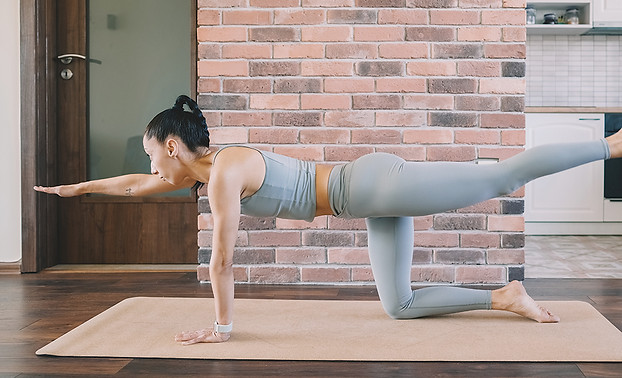Why Does My Low Back Pain Keep Coming Back?
03/12/25

Hi there!
Welcome to Month #2 of Reform's Newsletter, where we discuss hot topics in the physical therapy world, exercise tips, client wins, and upcoming events! I thought a good place to start this month would be addressing the most common symptom we treat as physical therapists - Low Back Pain. So, this week, we will be discussing Low Back Pain - why does it some come back so often, and what are some ways I can prevent this?
What Does the Research Say?
Low back pain is one of the most common reasons people seek medical care, and for many, it’s not just a one-time issue. If your back pain seems to go away only to return weeks or months later, there’s likely an underlying cause that hasn’t been fully addressed. Before we get into some of the common root causes of low back pain, lets first review some of the statistics surrounding low back pain:
-
80% of adults at some point in their lives will be affected by low back pain (Martin, Tosteson, Laurie, 2014).
-
Low back pain is the leading cause of disability globally, resulting in millions of lost workdays and significantly impacting quality of life (Beattie, 2016).
-
Studies show that after an initial episode of low back pain, ~2/3 of people will experience a recurrence or flare up within one year (Ganesh, 2020).
Now, I know that was some pretty unfortunate statistics... but there is good news! Learning and understanding what may be the root cause and contributing factors to your low back pain can help reduce the rate and intensity of recurrence.
Common Root Causes of Recurring Low Back Pain
-
Weak and Improper Core Activation
-
Your core muscles—including the Transversus Abdominus (deep core muscles), Rectus Abdominus (six-pack muscles), and Obliques, play a crucial role in supporting your spine. If these muscles are weak and we are activating them incorrectly, your lower back takes on more stress, increasing the likelihood of pain coming and returning.
-
-
Poor Posture and Movement Patterns
-
Many people spend hours sitting, which places strain on the lower back - and our bodies are not designed to be in any one position for several hours at a time! Whether it’s slouching at a desk or lifting improperly, prolonged positioning of the spine can cause pain to stick around and return time and time again.
-
-
Lack of Mobility in the Hips and Thoracic Spine
-
The mobility in the joints surrounding your low back play a huge role in how your low back feels. When your hips or mid back are stiff, the low back has to compensate by either stiffening up as well, or moving more than it should, which can cause increased pain.
-
-
Incomplete Recovery After an Injury
-
If you’ve had an injury to your low back in the past and returned to normal activity or heavy lifting too soon, the tissues/structures in your low back may not have had sufficient time to heal and the root causes may not have been addressed/corrected appropriately. This could lead to a reoccurrence of the same issue if you did not fully complete your rehabilitation with a qualified practitioner.
-
-
Stress and Mental Health Factors
-
Chronic stress, anxiety, and poor sleep habits can contribute to chronic low back pain. These factors can cause increased muscle tension and cortisol dysfunction, which can lead to inflammation and reduce the body’s ability to recover and heal (Choi, Nah, Jang, 2021).
-
How to Break the Cycle and Prevent Recurring Pain
✅ Strengthen & Improve Core Activation – Incorporate deep core exercises to build a stable foundation for your spine. Working with a physical therapist to ensure appropriate core activation and bracing techniques which can help prevent low back pain, especially with heavy exercise and lifting movements!
✅ Improve Your Posture – Make ergonomic changes in your work station set up, add in mobility during your work day, and correct your biomechanics with lifting techniques can help reduce the risk of back pain. Physical Therapists can advise in all these areas!
✅ Prioritize Mobility – Regularly incorporate hip and mid back mobility exercises to ensure no additional strain on the lumbar spine!
✅ Manage Stress, Diet, & Sleep – Practice relaxation techniques like deep breathing & meditation, ensure you’re eating a healthy diet and getting quality sleep to aid recovery.
✅ See a Physical Therapist! – Whether you've had a specific back injury or been dealing with chronic pain for years, consult a physical therapist. We are there to listen to your story, identify key symptoms, determine the root cause & create a customized plan to help you get out of pain and reach your goals. We want to help you find a long term solution, not just a quick fix that comes back a few months later!
Thank you so much for following along, and stay tuned for what's to come next month! Feel free to share with family and friends who may be interested and reply back with any questions!
Talk to you soon,
- Dr. Dana LaPeze

